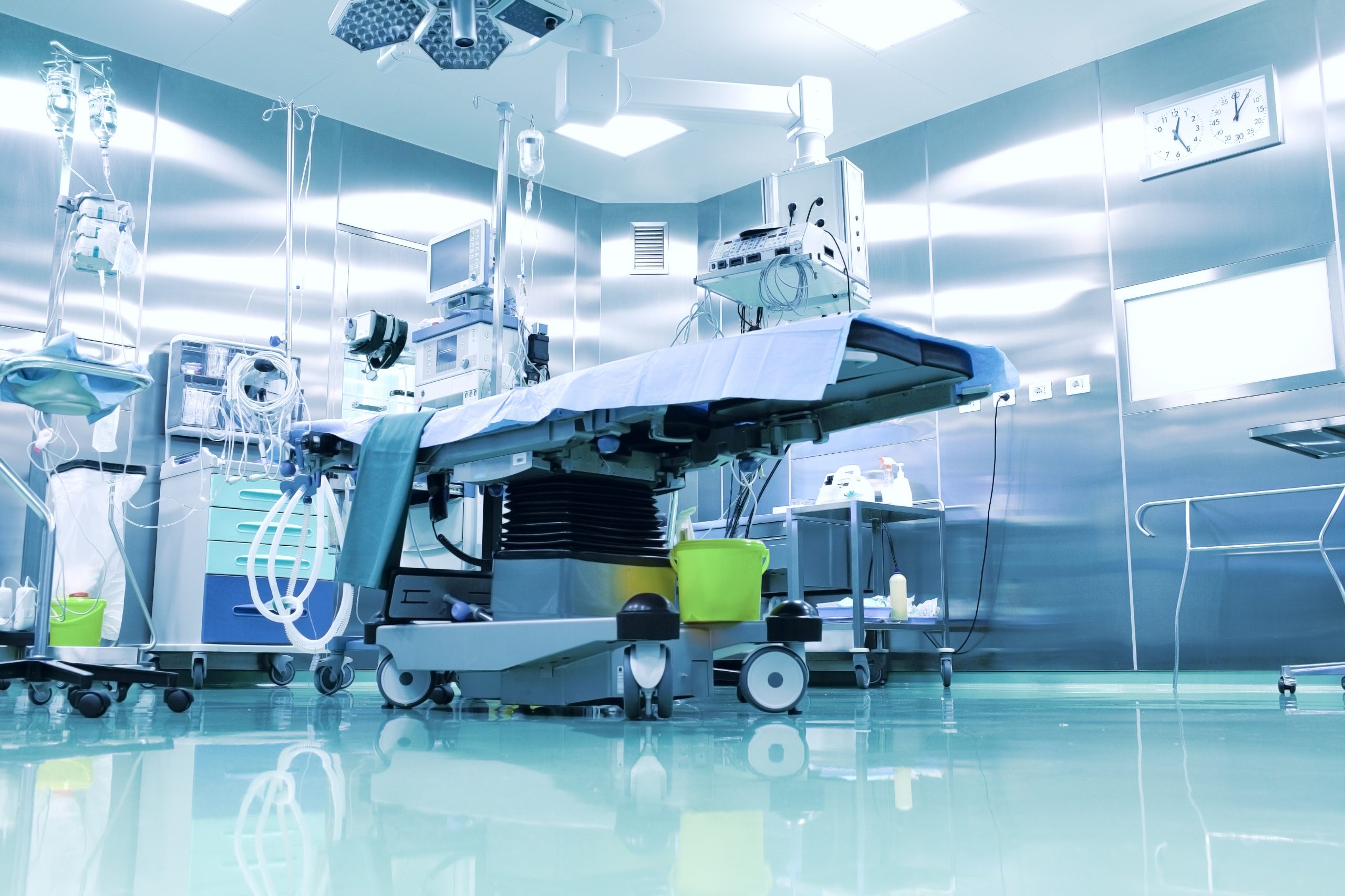
Despite the implementation of routine terminal cleaning and adherence to infection control and prevention measures, nosocomial infections and outbreaks within hospital and healthcare settings are still emerging. This is still a very relevant topic and present a high risk on admitted patients, especially the most vulnerable ones who may be immunocompromised or have underlying health conditions. Patients who are admitted into the hospital with a relatively treatable condition do not expect to contract a potentially life-threatening infection when leaving their homes. However, patients who are exposed to contaminated equipment during their stay at the hospital have a much greater chance to acquire a new infection. In England only, more than 300,000 people are diagnosed with Healthcare Acquired Infection (HCAI) every year. This has an estimated burden to the NHS of £1 billion yearly. In the US, it is estimated that nosocomial infections kill more than 100,000 people every year and costs their health system in excess of $35 billion.
It is now recognized that the environment may facilitate transmission of several drug-resistant health care-associated pathogens, including vancomycin-resistant Enterococci (VRE), Clostridium difficile, Acinetobacter spp., methicillin-resistant Staphylococcus aureus (MRSA), Norovirus and the recent Coronavirus (SARS-CoV-2). These pathogens are frequently shed by patients and staff, whereupon they contaminate surfaces for days and increase the risk of acquisition for other patients, staff and visitors that may come in contact with these surfaces. These pathogens are known to thrive on variable surfaces and survive for a long period of time. For example, it is well described in the literature that MRSA is capable of surviving on surfaces from as little as 7 days up to 7 months, only needing 4 colony forming units (CFU) to cause an infection it still represents one of the biggest contributors of HCAIs. C. difficile spores can last in the environment or on surfaces for more than 5 months with an infectious dose of five spores only. Microorganisms can survive on surfaces because of their production of adhesion molecules and biofilms. These abilities are favoured when microorganisms grow on materials with high absorptive capacity. For example, Coagulase-negative Staphylococci (CoNS) are able to survive up to 21 days on cotton used to produce clothing and towels, while P. aeruginosa survives for only 2–24 hours on the same surface. Factors that may affect the transfer of microorganisms from one surface to another and the cross-contamination rates: are the type of organisms, the level of contamination, the source and type of surfaces as well as environmental factors such as humidity and temperature levels.

Before we explore the literature, we must understand that high-touch surfaces in patient rooms that are very close to the patient can represent a critically important reservoir. These can include monitors, bed controls, bedrails, call buttons, drug/food trolleys and bedside tray tables. At the same time, bed mattresses, sheets and curtains were also associated with increased rates of HCAIs. Also, equipment within the intensive care units (ICUs) such as endoscopes, ventilators and other devices have been also associated with HCAIs. In addition, surfaces such as bedrails, which are significantly contaminated and most frequently touched object, may only be cleaned by environmental staff (housekeeping) once per day. MRSA alone can create an entire new generation in about 30 minutes (and 1 bacterium can become 1 billion in 10 hours), causing the contamination to persist and worsen; knowing that more importance and care should be given to equipment decontamination. In addition to that, the hands of patients and healthcare staff can become contaminated once they come in contact with these surfaces. For example, in a US study of 100 hospitalized patients, 39% of patients’ hands were found to be contaminated with pathogens within 48 hours after admission as a result of coming in contact with contaminated surfaces and equipment.
One review by Russoto et al. (2015) provided solid evidence of the contamination of different compartments within a patient zone in intensive care units (ICU). The authors found that electrocardiography (ECG) lead wires, stethoscopes, mechanical ventilator systems, ultrasound equipment, and medical charts were highly contaminated with Multi Drug Resistant Organisms (MDROs) and associated with increased nosocomial infections and the emergence of outbreaks. The first UK NDM-1 Klebsiella (an MDR strain) outbreak in 2010 involving 12 patients in an NHS trust, was rapidly traced back to the endoscopic video camera head in the urology theatre, which was only cleaned once a day with detergent wipes.

A study conducted at the Western General Hospital, Edinburgh, provided evidence of a high incidence of bacterial contamination of bed-control handsets in a colorectal ward setting. The researchers found that twenty-nine (41.4%) bed control handsets grew bacteria known to cause nosocomial infection, including 22 (31.4%) handsets that grew enterococcal species, 9 (12.9%) that grew MRSA, 2 (2.9%) that grew MSSA, 2 (2.9%) that grew coliforms, and 1 (1.4%) handset that grew anaerobic bacteria. Thirty-one (44.2%) bed control handsets demonstrated similar bacterial species present on both bacteriological sampling events. Of these, 29 were positive for CoNS, 2 for Enterococcus spp. and 1 for MRSA with one of the bed-control handsets showing both CoNS and Enterococcus spp. on the same handset, one week later.
The findings were also supported by Young et al (2005), who reported the contamination of 103/115 electronic hospital bed-control handsets in an American healthcare institution. The cultures of 12 units (10.4%) revealed no microorganisms. One hundred three units (89.6%) had cultures that grew microorganisms. Of the handsets that were found to contain microorganisms, 48 units (46.6%) had only 1 bacterial species, and 55 units (53.4%) had multiple bacterial species, including 33 units (32.0%) with 2 microorganisms, 21 units (20.4%) with 3 microorganisms, and 1 unit (1.0%) with 4 microorganisms. The microorganisms identified included 90 isolates (87.4%) of CoNS, 51 isolates (49.5%) of Bacillus species, 13 isolates (12.6%) of fungal species, 8 isolates (7.8%) of non-haemolytic Streptococcus species, 7 isolates (6.8%) of α-haemolytic Streptococcus species, 1 isolate (1.0%) of S. aureus, and 1 isolate (1.0%) of MRSA.
In addition to bed-control handsets, bed mattresses and bed decks serve as potential reservoirs for nosocomial pathogens. A randomised clinical trial published in 2012 in the Antimicrobial Resistance and Infection Control Journal evaluated contamination of bed mattresses and bed decks before and after patient discharge and after terminal cleaning. After the patients were discharged, surfaces were again cultured. The mattresses had significant increases in their bacterial counts at discharge (7.7 CFU/30 cm² on admission vs. 79.1 CFU/30 cm² after discharge; p < 0.001). Final testing was performed on the bed deck after the beds were terminally cleaned. After this terminal cleaning, the bed deck was more contaminated than before terminal cleaning. The mean colony count, after discharge, on the 66 bed decks was 6.7 CFU/30 cm². The mean colony count, after terminal cleaning, on the 66 bed decks increased to 30.9 CFU/30 cm². Most commonly the bacteria had been present on both the bed deck and mattress after discharge, but the counts were significantly higher after terminal cleaning. There was one bed where P. aeruginosa was present on the mattress after discharge but not on the bed deck. After terminal cleaning, the P. aeruginosa was present on both the mattress and the bed deck.

These findings illustrate the bigger picture of patient equipment contamination as a result of human error, poor adherence to cleaning protocols and not applying alternative decontamination/disinfection interventions. With manual and routine cleaning not being sufficient to significantly remove pathogenic microorganisms from high-touch surfaces and as a result of the current pandemic, hospitals and healthcare settings are desperately seeking alternative methods to successfully decontaminate the environment including patients’ equipment.
A new solution to effectively decontaminate and clean patient equipment to improve quality and consistency was introduced by Inivos. It is called Patient Equipment Cleaning Centre (PECC). It’s a safe process for swapping dirty equipment for clean equipment in high-pressure and high-throughput situations by combining deep cleaning with Hydrogen peroxide vapour decontamination. It consists of four stations of which the dirty patient equipment is safely transferred from wards to the PEC centre. PEC centre is divided into a dirty storage room, a cleaning station room, a hydrogen peroxide vapour (HPV) decontamination room and a clean storage room. The efficacy of the PEC centre was evaluated in a trial and it was found that the turnaround time between one patient being discharged and the space being ready for the next admission was reduced from 57 minutes to 50 minutes (15% reduction) on one ward. Also, standard deep cleaning normally takes 4.5 days to deep clean a ward and it would be reduced to 3 days instead with PECC. By having purpose-built decontamination centre out of the 40,460 discharges and transfers in 2019, this would have released 211 additional bed days with the use of the PECC.
It is therefore crucial to understand the hazards associated with environmental contamination within a healthcare setting in order to reduce the risk of infection to a minimum level. Recently, no-touch terminal cleaning procedures have been investigated and deployed in different settings. They consist of the use of either physical (e.g., ultraviolet, UV-light) or chemical agents (e.g., hydrogen peroxide, H₂O₂ vapour, HPV) delivered by specific devices without the active role of personnel. The theoretical advantages of these techniques are a higher overall performance given the capability to decontaminate difficult to reach surfaces, difficult to clean equipment, the lack of reliance on personnel performance, and the ability to validate the decontamination processes to ensure the right level of efficacy has been achieved.
Follow the link to the webinar highlighting the advantages of PECC A Strategy For Hospital Patient Equipment Decontamination – Zoom.





